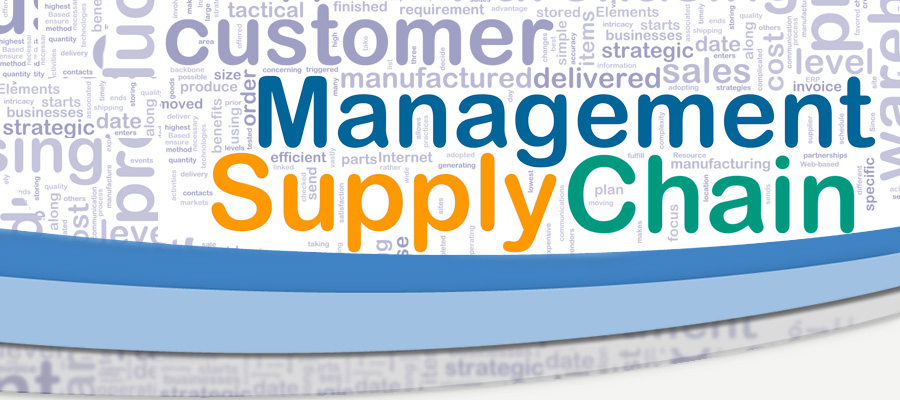The Supply Chain: 3/11/2015

- Here is apple’s entire supplier responsibility standards document. It clearly addresses all of the Chinese factory supply chain issues they have faced over the last 6 years. Interesting read:
https://www.apple.com/supplier-responsibility/pdfs/supplier_responsibility_standards.pdf - When hospitals manage their supply chain:
One of the biggest factors in successfully cutting supply chain costs is having real-time, actionable data. It’s not enough to have data, you have to manage the data in a way that makes it useful to empower better decision-making. While this is easier said than done, the increased availability of data standards and new technologies to help you manage data will make it possible.
The important data points you need to extract from your ERP system and contract repository include: vendor master, contract master, purchase order headers, item master, invoice payment lines, spend classification, contract items, purchase order lines and invoice/payment header. Additionally, your purchase order spend must be identified and rationalized.
http://www.healthcarefinancenews.com/blog/supply-chain-expertise-enters-hospital-c-suite
- 6 Supply Chain Challenges:
Everyone is talking about ‘big data’ and its impact on the supply chain but be aware: it won’t solve all your problems! It is easy to be swept along by the promise that big data is going to answer all of your questions about supply chain performance (and even those you didn’t think you needed to ask) but the reality is that big data, to a degree, is a misnomer. The challenge isn’t managing the data, the challenge lies in realising the insight that the data offers. With the right tools in place organisations can gain visibility into the supply chains to identify areas of concern as well as areas of potential growth in order to make them more streamline
http://www.supplychaindigital.com/procurement/3863/Six-challenges-that-could-break-the-supply-chain
- Infographic: Supply Chain Risks
http://www.kinaxis.com/Global/resources/papers/supply-chain-risks-infographic-kinaxis.pdf
Video: Why Are Employees More Loyal Than Their Employers?
Supplier Report: 3/7/2015

IBM
- Watson’s role in IBM’s recovery:
Still, the company’s transformation will take some time. “We believe that data analytics is critical to IBM’s long-term growth story, and a big piece of that is Watson,” Bill Kreher, a technology analyst at Edward Jones Investments, says. “IBM is committing more money and resources toward solutions like the genome project than anyone else. I think patient investors will be rewarded as IBM continues to progress down the cognitive computing front.”
- IBM buying Alchemy API to add more AI power to Watson:
The software of Alchemy API is extensively used by 40,000 developers for analyzing and classifying text and images. The more the technology works, the smarter it gets. The point of using this technology is that it helps in analyzing information and provides important details about the users. Watson would perform in a similar manner. This technology is basically very helpful in identifying the types and habits of the target audience, thus benefiting the advertising companies.
http://www.gurufocus.com/news/321531/ibm-eyeing-foray-into-artificial-intelligence
- A summary of IBM’s InterConnect 2015 Conference (there is a “green” focus to this article)
However, as noted here previously, when it comes to cloud computing, IBM appear to be pursuing the Amazon model of radical opaqueness. They refuse to publish any data about the energy or emissions associated with their cloud computing platform. This is a retrograde step, and one they may come to regret.
https://www.enterpriseirregulars.com/85363/ibms-interconnect-2015-good-not-good/
- IBM adds OpenPower to SoftLayer
“The result is that technology providers have to pull on more and more levers – like adding GPU acceleration or enabling GPU virtualisation, or enabling FPGA attachment – to get cost-to-performance to come down; that is driving much of the heterogeneity in the cloud – different types of heterogeneity, not just at the CPU level,” he ( Brad McCredie) said. “It’s one of the big drivers behind OpenPower.”
- IBM Headcount continues to drop:
Lee Conrad, national organizer for the workers’ group, Alliance@IBM, said he has learned there were 75,622 regular IBMers on Tuesday, down by 1,686 from mid-February. IBM has not confirmed nor commented on that number. But the company has said that a “workforce rebalancing” this year would amount to several thousand jobs.
http://www.poughkeepsiejournal.com/story/money/2015/03/04/ibm-headcount-drops-globally/24393745/
- IBM sued by investors over alleged securities fraud:
According to the complaint, IBM inflated its stock price before selling the semiconductor unit by carrying the unit’s property, plant and equipment assets on its books at US$2.4 billion, when it should have known the assets were worthless.
http://www.itnews.com.au/News/401162,ibm-sued-by-shareholder-over-alleged-securities-fraud.aspx
- IBM given “AA-” rating by MorningStar
http://sleekmoney.com/morningstar-issues-aa-credit-rating-to-international-business-machines-corp-ibm/155148/
Oracle
- MorningStar: Oracle Receives AA Credit Rating
http://sleekmoney.com/oracle-receives-aa-credit-rating-orcl/160500/ - Oracle Grows on Cloud Business, Big Data Among Key Drivers
Oracle enjoys a dominant position in the enterprise software and database management system (DBMS) software market. According to market research firm Gartner, global spending on IT infrastructure is estimated to grow 2.4% to $3.8 trillion in 2015. Among infrastructure, Big Data and digitalization initiatives are likely to contribute the majority of DBMS market growth. We believe that Oracle’s leading position in the DBMS software market will make it the primary beneficiary of this increased spending.
http://www.zacks.com/stock/news/166844/oracle-grows-on-cloud-business-big-data-among-key-drivers
HP
- To follow up from last week – HP is spending $2.7B on Aruba networking
http://blogs.barrons.com/techtraderdaily/2015/03/02/hp-to-buy-aruba-for-2-7-billion/ - Is the Aruba buy a good move?
Make no mistake about it. Hewlett-Packard definitely needs to do this because its consumer business lines are slowing down. While its corporate lines show a lot of promise, they still need a lot of growth. This move to buy Aruba Networks makes a lot of sense within this broader context.
- Warren Buffet made alot of news this week, and I find this comment interesting in the context of HP:
According to Buffett, bankers’ appetites for deals mean that they can do almost anything to push for the sale or purchase of a company. He cited how investment bankers usually urge buyers to pay premiums of up to 50% for the target company. Investment bankers usually tell buyers wonderful things that will happen once the deal closes, such as “control value” of the acquisition. The interest of the bankers is to push a deal through and get paid for their action.
However, Buffett said the same bankers would turn up a few years later and urge for the spinoff of the business they had pushed so hard to be acquired. Instead of control value, bankers change the story and urge for spinoff of the acquisition on the basis of unlocking shareholder value.
http://investcorrectly.com/20150304/warren-buffet-raises-red-flags-banks/
Other
- Salesforce needs to watch its back for Microsoft
Salesforce.com spent a lot of time on its investor call talking about the large enterprise deals it is winning because that’s what the Street likes to hear, but the company has to keep its eyes on the midmarket, where Microsoft Dynamics is right behind them. The midmarket is an engine of growth and a great counterbalance to the inherent spikes of big deals. And Microsoft is getting good at winning here. Not only is its Cloud version competitively priced for the midmarket, it also has a strong reseller channel that can sell cost-effectively into this market.
http://venturebeat.com/2015/03/06/why-salesforce-com-should-be-watching-its-back-for-microsoft/
- The end of SaaS
The best development platforms we’ve seen are Apple’s iOS and Google’s Android for mobile, or the Xbox One. All of these development platforms have hardware, an operating system, and a software layer. Salesforce’s development platform only leverages software and provides less utility to 3rd party app developers, hence only ~300 apps created in the past 15 months. The most comparable example would be Facebook’s single sign-on capabilities. By integrating with Facebook, an app developer can let a new user create a user profile by “Logging in with Facebook.” This is the best use case we’ve seen of development platforms that only leverage software. But I don’t see it translating too well with a CRM tool instead of social network.
http://www.huffingtonpost.com/alex-moazed/the-end-of-saas_b_6762108.html
Productivity Bulletin: 3/6/2015
 This week we have the infographics edition of the productivity bulletin. It was a light advice week and these things just keep building up.
This week we have the infographics edition of the productivity bulletin. It was a light advice week and these things just keep building up.
- The decline in on-the-job training

http://marginalrevolution.com/marginalrevolution/2015/02/the-decline-in-on-the-job-training.html - It is never too late to start:

http://www.lifehack.org/articles/communication/this-infographic-will-make-you-realize-its-never-too-late-too-start.html - Things you should never say if you want to be successful (another listicle!)
Solution: Look for ways to accept new responsibilities. If you feel completely overwhelmed at work, learn how to say no professionally. For the best results, suggest an alternative when you say no (e.g. “No, I cannot create that report for you. However, Jane is outstanding at creating reports and I know that she is interested in learning more about financial reporting.”)
- Why you don’t want to be TOO humble (we were just talking about this)
http://www.lifehack.org/articles/work/8-reasons-why-you-should-not-too-humble-work-2.html

